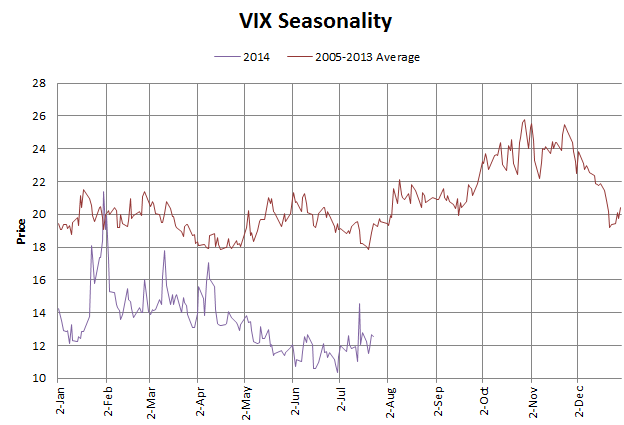What is really great about Volatility Made Simple, is that at the end of each month the performance of various volatility trading strategies is recorded. As of the November update there were twenty different strategies on the list, and according to him, they represent the vast majority of volatility trading strategies of traders timing these products.
Below is his image which illustrates the November performance of strategies compared to XIV buy-and-hold.
The other nice thing is that he will occasionally write posts which independently examine each strategy in depth, identifying the exact trading rules and performing backtests to 2004 to see how they perform under a variety of conditions. This is useful to make sure that a strategy is not just optimized for ideal markets but can also perform well in more turbulent environments. In addition he also provides statistics such as percent winning/losing trades, average trade return, and sometimes the max drawdown percentage and Sharpe ratios. Below I will post several of the charts from his site.
It gets interesting looking at the ten year returns of these strategies. Looking at VIX & More's (by Bill Luby) VIX:VXV ratio strategy, we can see that a portfolio of $10,000 in 2004 grows to a portfolio of over $1,200,000 by February 2014 when following these rules. Chart below:
From $10,000 to $1,200,000 -- that's a a 12,000% return in 10 years! That's remarkably impressive.
Then there is Trading the Odds's Volatility Risk Premium strategy which boasts growth of $10,000 to over $5,000,000 (50,000% gain) over the same time frame, beating Market Sci's returns by a factor of five:
And if that return isn't enough, there's the Optimized VRP Strategy, which fine-tunes backtested performance to turn a portfolio of $10,000 to over $10,000,000 in 10 years. This strategy is achieved with an average of just eight trades per year. Chart below:
Wow. So should we be issuing a scam alert? A 100,000% return over 10 years?!? GET REAL!! Too good to be true, right?
Except that these strategies are all valid. The average investor who just buys index ETFs or scours the stock market looking for the hottest stocks in a struggle to outperform the S&P 500 (or just break even) will completely dismiss these returns as impossible. But for me, VIX and More, Market Sci, Trading The Odds, Volatility Made Simple, and all the other people who have developed one of these volatility strategies, these returns are real (Note: None of these people are aware that I'm writing this, they have no connection with the Trading Volatility site, and do not necessarily agree with or endorse anything I'm writing).
There are many other confidential volatility strategies out there. They belong to the smart money managers and institutions who are making money hand over fist. And the best part is that it doesn't matter if it is a bull or bear market. 2008 financial crisis? Not a problem -- in fact, a good strategy flips to buy volatility to take advantage of a steep market decline.
(It also helps to understand how VIX ETPs work. For an overview you can read my free eBook, Fundamental Concepts and Strategies for Trading Volatility ETPs.)
When it comes down to it, I don't really care which strategy you choose as long as you are successful. It's just time to stop being one of the many unfortunate who are on the wrong side of the trade.
If you'd like more information on the Trading Volatility Bias strategy please visit this link. Our Bias indicators are automatically emailed at the end of each trading day and our Bias change alerts notify subscribers whenever the Bias changes direction, making it easy to follow. Our subscriber services are available for less than $3 per day making it very affordable.
You can also take advantage of our free VIX Futures Data pages as well as our SPY Arbitrage and Pivot Point tools. And if you have any questions at all, feel free to reach out to me via the Contact page.
------------
Hypothetical and Simulated Performance Disclaimer
The results are based on simulated or hypothetical performance results that have certain inherent limitations. Unlike the results shown in an actual performance record, these results do not represent actual trading. Also, because these trades have not actually been executed, these results may have under- or over-compensated for the impact, if any, of certain market factors, such as lack of liquidity. Simulated or hypothetical trading programs in general are also subject to the fact that they are designed with the benefit of hindsight. No representation is being made that any account will or is likely to achieve profits or losses similar to these being shown. Additional performance differences in backtests arise from the methodology of using the 4:00pm ET closing values for XIV, VXX, and ZIV as approximated trade prices for indicators that require VIX and VIX futures to settle at 4:15pm ET.

























